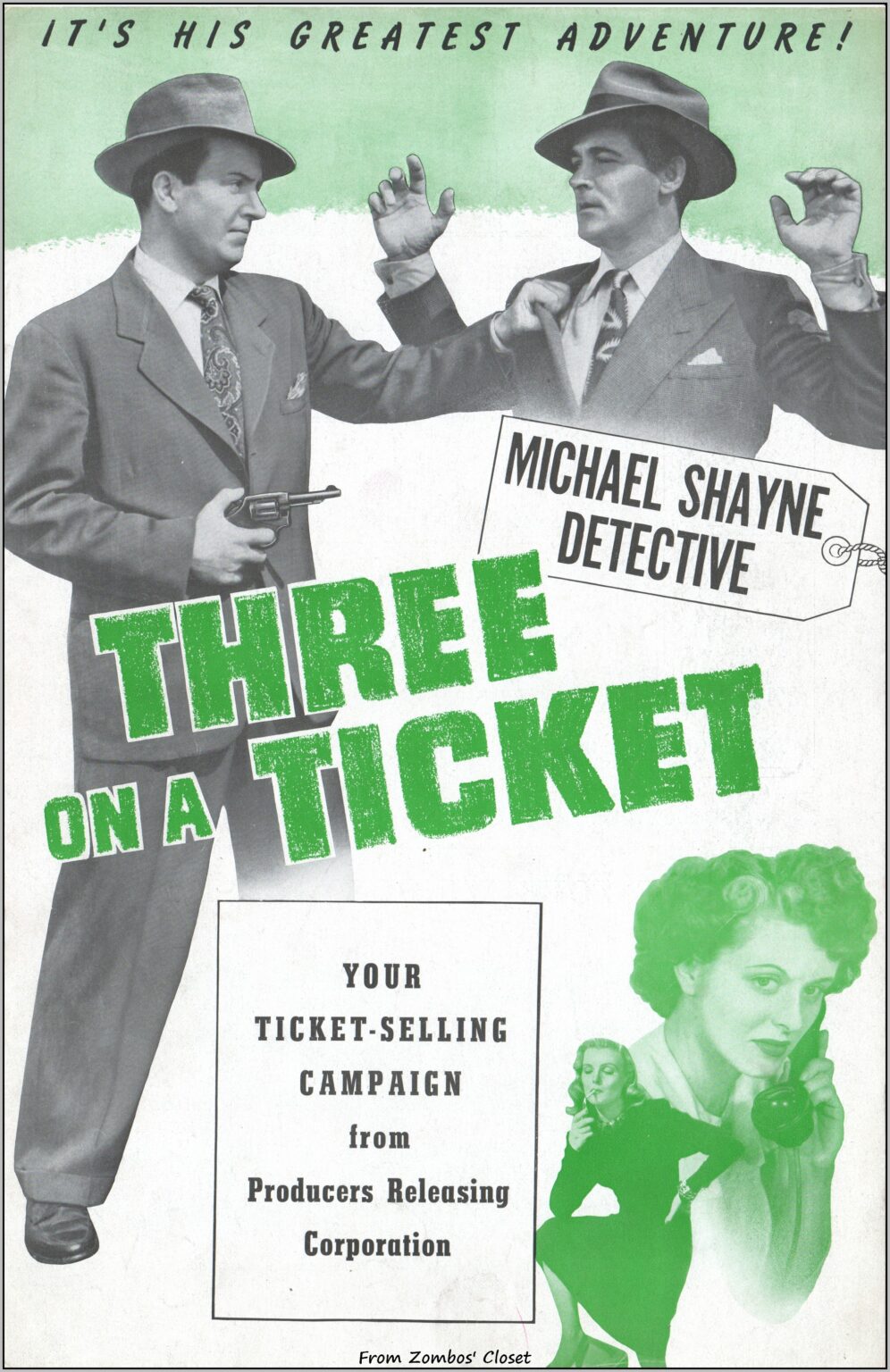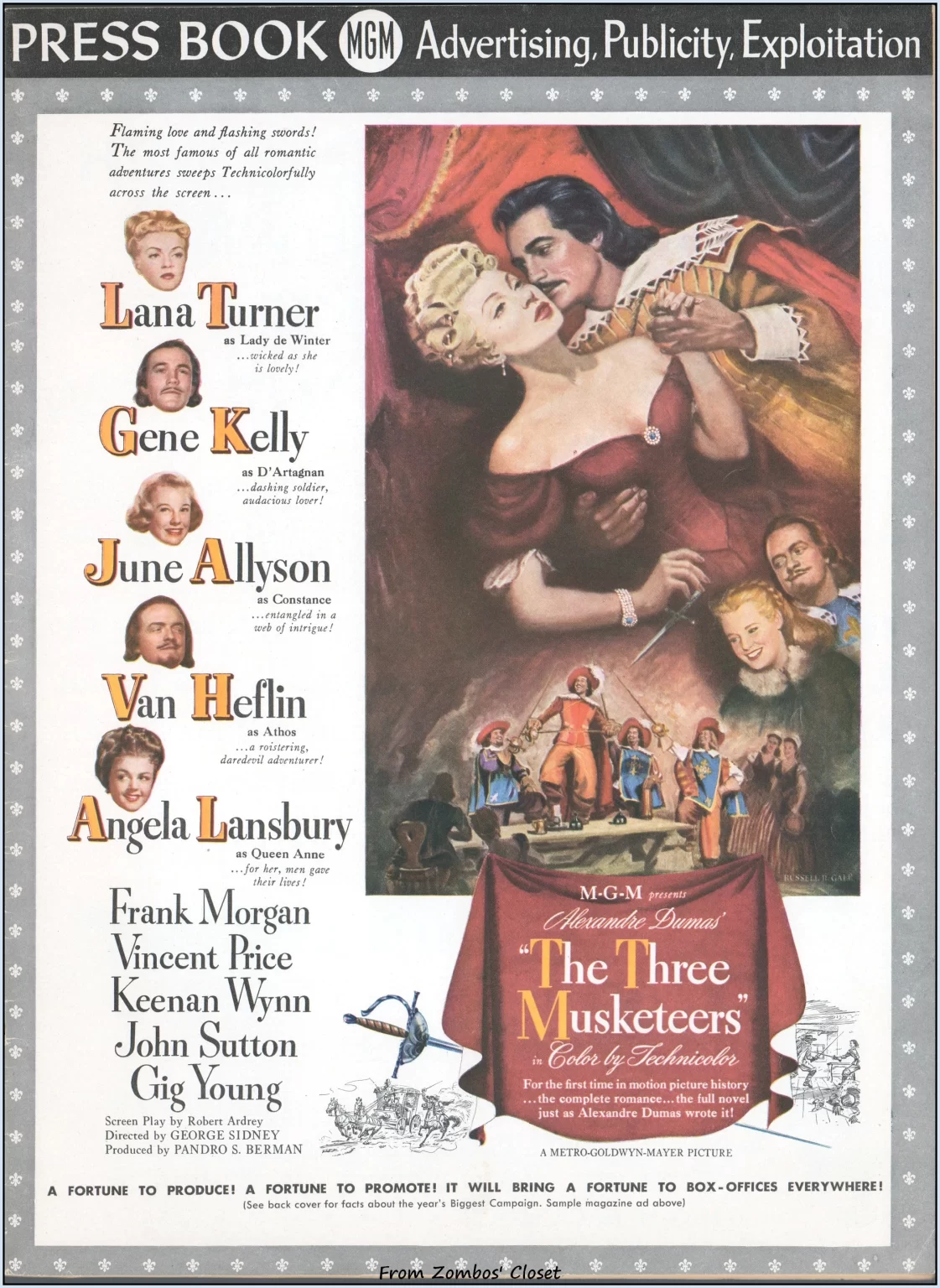Three on a Ticket (1947) Pressbook
A dying man walks into detective Michael Shayne’s office, holding onto a baggage ticket. The story unfolds from there. With Hugh Beaumont (Leave It to Beaver) as Shayne, the story is more poached than hard-boiled, but this PRC production is directed by Sam Newfield, one busy beaver to be sure as he was prolific and completed 250 feature movies beginning in the silent age and up to 1958. He also directed a lot more too, including training films, shorts, industrial films, and for television. He directed The Terror of Tiny Town 1938, an all small-person novelty western that’s best seen during a midnight show.
Producers Releasing Corporation (PRC) was a Poverty Row outfit but they had their own small studio. Sam Newfield directed so many of their movies he used two other names to make it look like PRC had more directors. Mostly producing B movies, the studio did the usual fare including westerns, horrors, and assorted action dramas. The Devil Bat and The Devil Bat’s Daughter were hits for PRC as well as many other films, and the classic noir, Detour, was also produced by the studio. They even had their own version of the Bowery Boys (Dead End Kids) called the Gas House Kids with Billy Halop. Halop’s career peetered out due to personal problems and his aging (no more playing Tommy), but he did have a resurgence in the 1970s with television’s All in the Family, where he played in ten episodes.



